
Top-ranked companies show year over year that strong cultures drive performance and retention. Look at Bain & Company, seven-time winner and a consistent standout. They didn’t stumble into their place at the top. Their formula combines a relentless focus on learning opportunities with a deep commitment to inclusion and open feedback.
Employees at Bain & Company routinely cite “incredible professional development accelerator” and “intensive training programs with continuous mentorship” as key differentiators (Bain celebrates seventh #1 spot). Practically speaking, this results in reduced attrition and quicker onboarding for new hires, both of which are key metrics for engineering leaders.
But the lessons aren’t limited to consulting powerhouses. NVIDIA has remained in the top 5 for several years, a feat powered by its strong technical culture and clarity in decision-making. The takeaway isn’t about perks or campus lunches. It’s about deep investment in people and clarity in the company’s values and vision.
Key traits of top workplace cultures:
If your team’s engagement surveys are mediocre, you’re not losing to bean bags and ping pong tables. You’re losing to leaders who set a higher bar.
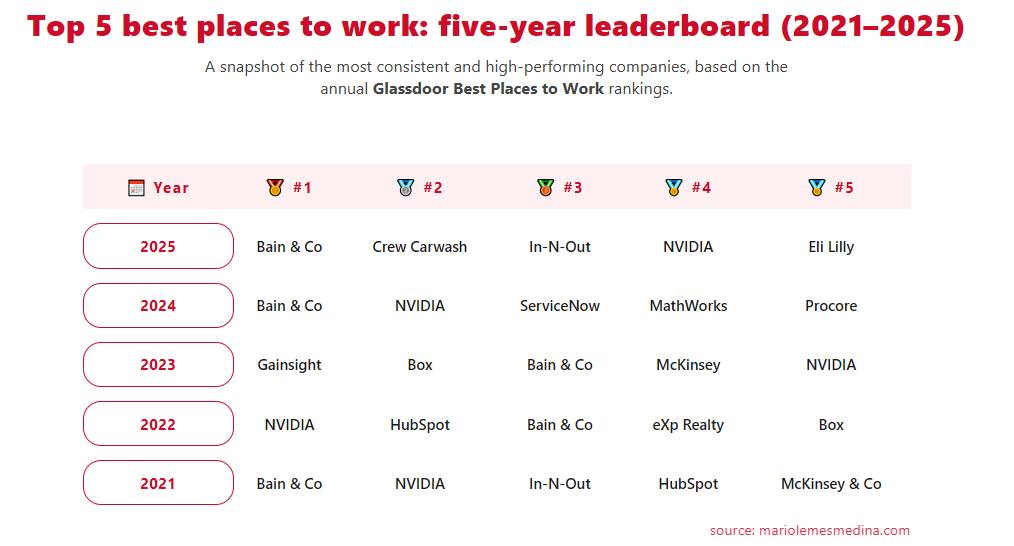
This year’s Glassdoor results reveal a hard truth: every top-ten employer is actively using technology as a workforce multiplier. At Bain & Company, for example, the company didn’t just talk about AI, they’ve released 15 proprietary AI-powered tools in the past year while rolling out 200+ new AI-enabled workflows worldwide.
That’s not fantasy. Employees directly attribute their workplace satisfaction to “real investment in innovation” and having the tools needed to solve complex, high-impact problems.
NVIDIA maintains its elite status with ongoing technical investment and a culture where experimentation doesn’t mean burning out. Microsoft’s steady climb back into the top 10 reflects years spent refactoring internal processes for speed and flexibility, while still supporting employee wellbeing.
Teams that still treat internal platforms, automation, or LLMs as “nice to have” aren’t just missing out on efficiency. They’re missing the genuine engagement that comes from engineers tackling ambitious challenges with powerful tools.
Stats worth noting:
Technical teams want to build where they see impact. If your stack is legacy and your attitude toward modernization is defensive, don’t expect to hold onto A-players.
Glassdoor’s methodology is brutal in its simplicity: winners are chosen purely by voluntary, anonymous employee reviews covering nine key areas, from compensation to leadership credibility and “recommend to a friend” scores (Glassdoor Awards Methodology).
There’s no room for leadership PR spins or curated employer branding videos. Companies like Bain & Company, NVIDIA, and In-N-Out Burger have learned to treat internal dissatisfaction as a lagging indicator, not a surprise.
Great teams continually refine their culture using high-frequency, high-quality feedback. Emerging stars like eXp Realty jumped from #22 to #7 this year after making visible changes based on employee concerns (eXp Realty’s leap).
Review attributes Glassdoor measures:
Ignoring this data is like ignoring unit test failures in prod. You’ll miss both the warning signs and opportunities for rapid course correction.
The 2025 list is diverse. Consulting, tech, retail, finance, biotech, and even public sector organizations appear in the top ranks. Crew Carwash and In-N-Out Burger have stuck with the top 10 club alongside AI-forward companies like NVIDIA.
What gives? The best employers understand that mission matters, but so does clarity in role expectations, regular feedback, and personal growth. Size is not destiny. Parry Labs, the top small/medium company, leads with the same principles as the giants.
Here’s the harsh edge for engineering leaders: top-tier culture isn’t reserved for deep-pocket tech giants or glamorous brand names. Consistency in manager quality, peer culture, and real empowerment is reproducible at almost any size.
Every employee review is a heartbeat check on your engineering culture. Ignore these signals, and you surrender ground to organizations where teams learn faster, move with purpose, and feel connected to both product and colleagues.
The 2025 Best Places to Work aren’t perfect, but they show it’s possible to outpace the market by treating culture, technology, and feedback as strategic levers. For engineering leaders, copying their playbook is less about chasing awards, and more about building teams you’re proud to lead. The competition never stops, and neither should your commitment to making your team the place top talent wants to stay.


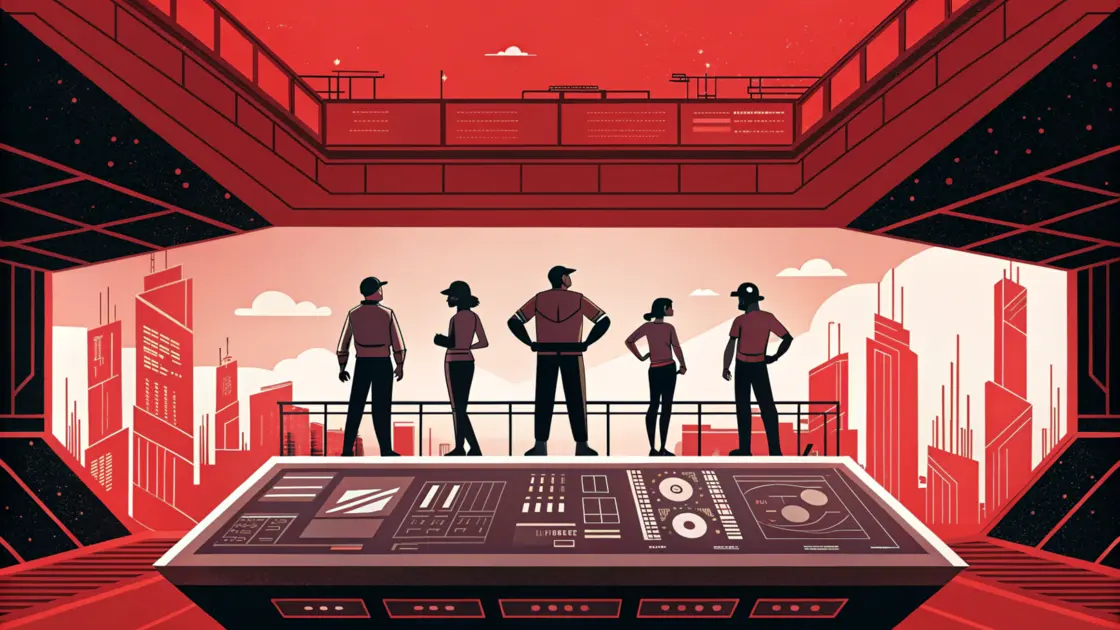
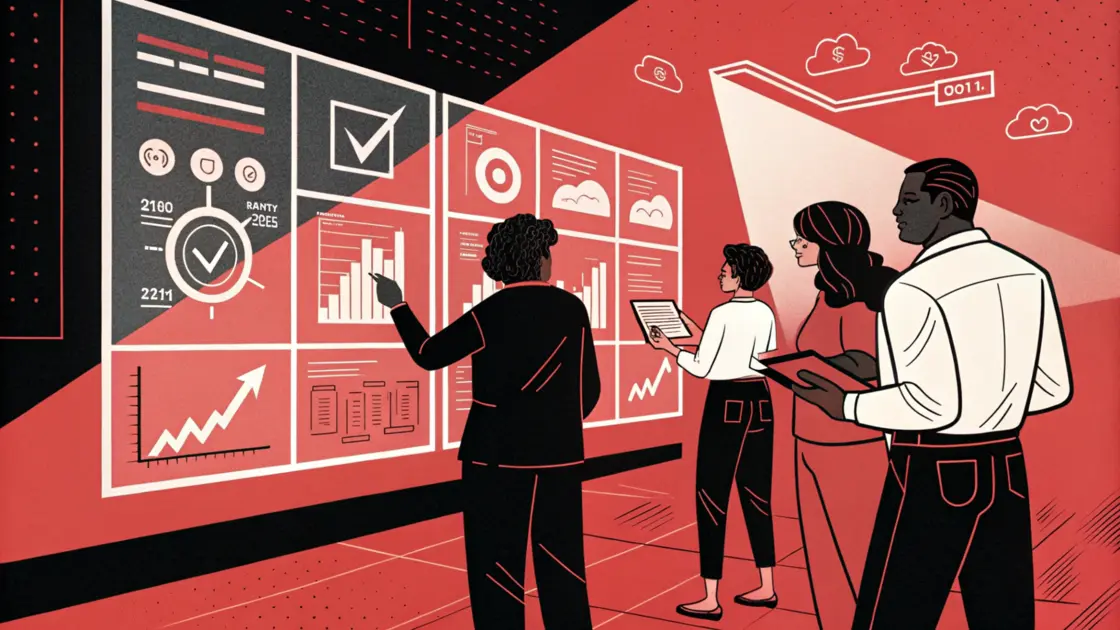

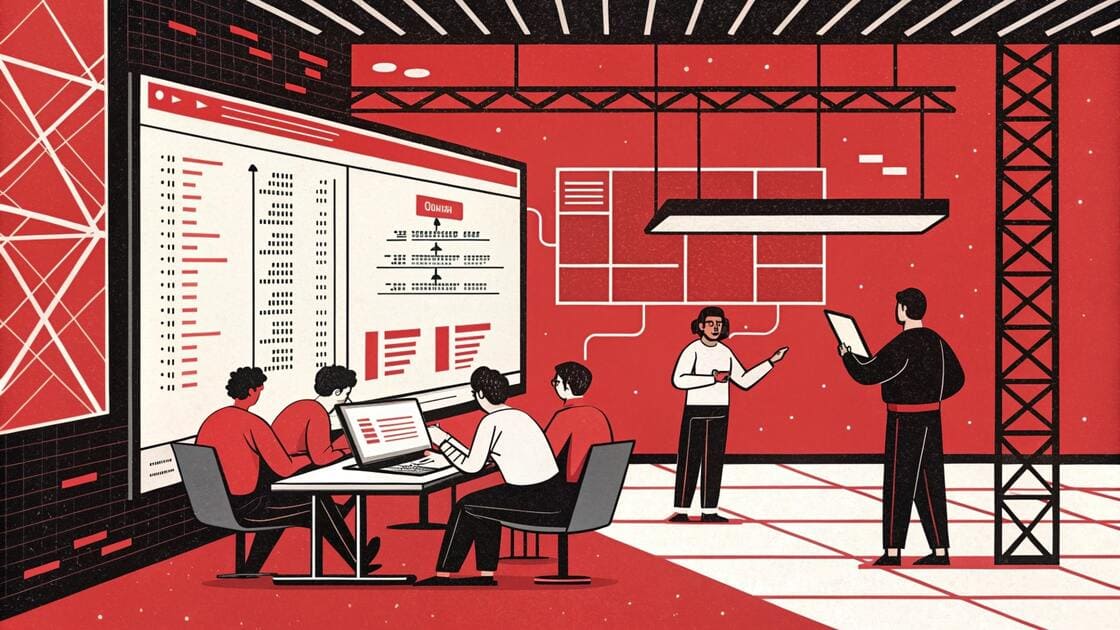
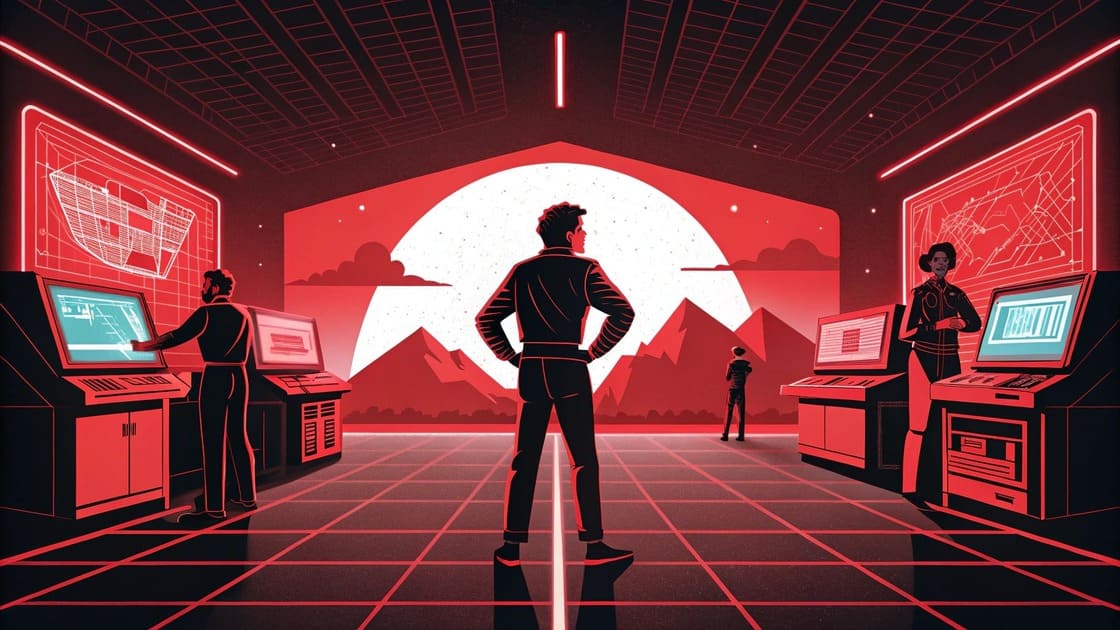






© 2025 Mario Lemes Medina. All Rights Reserved.